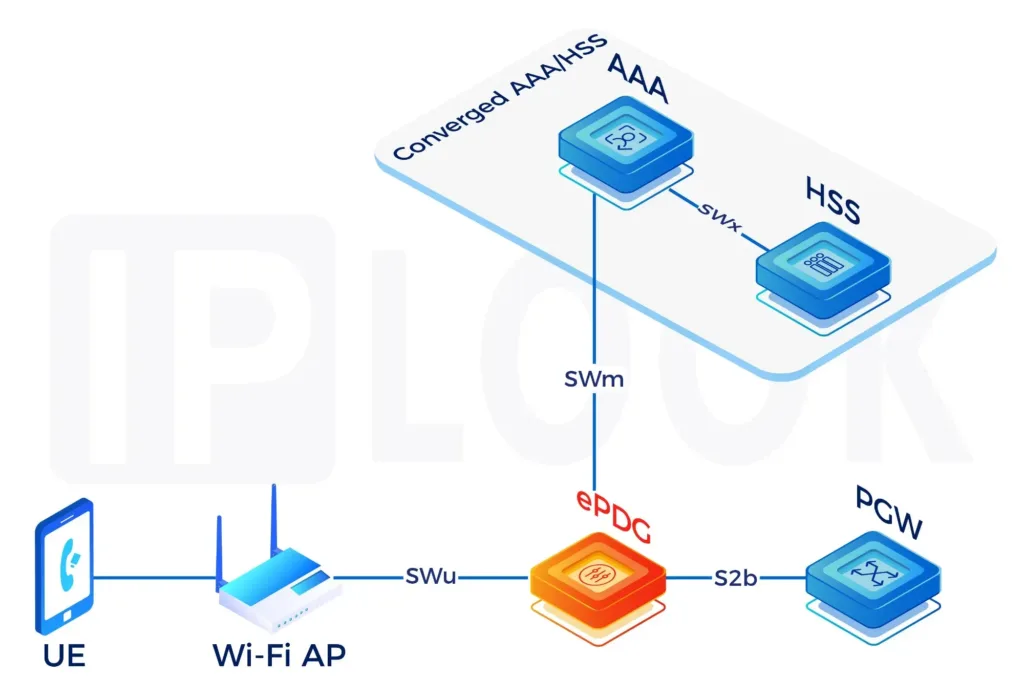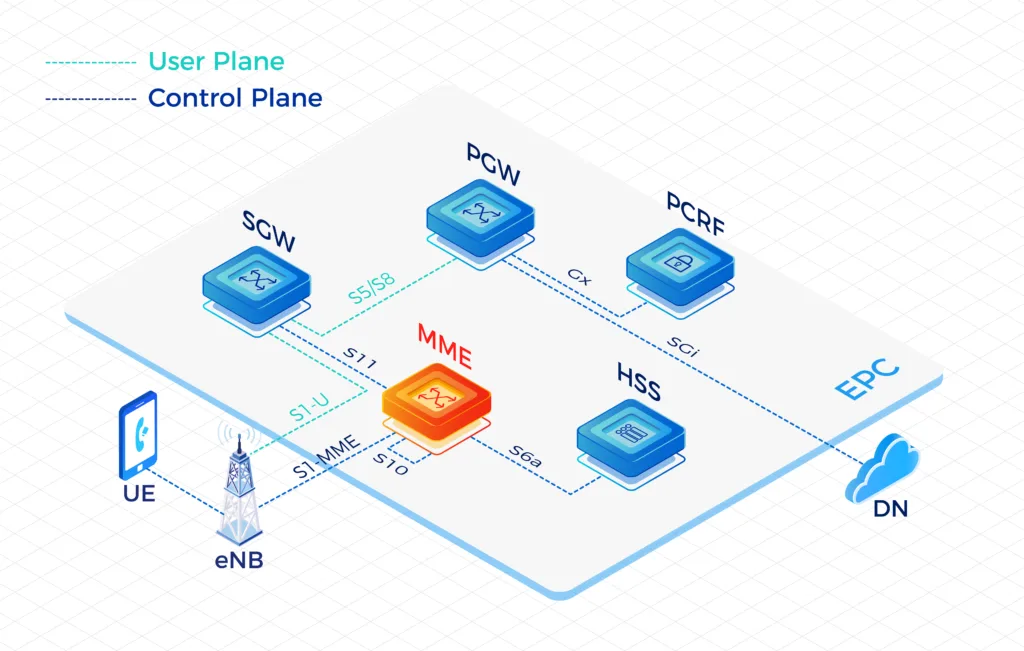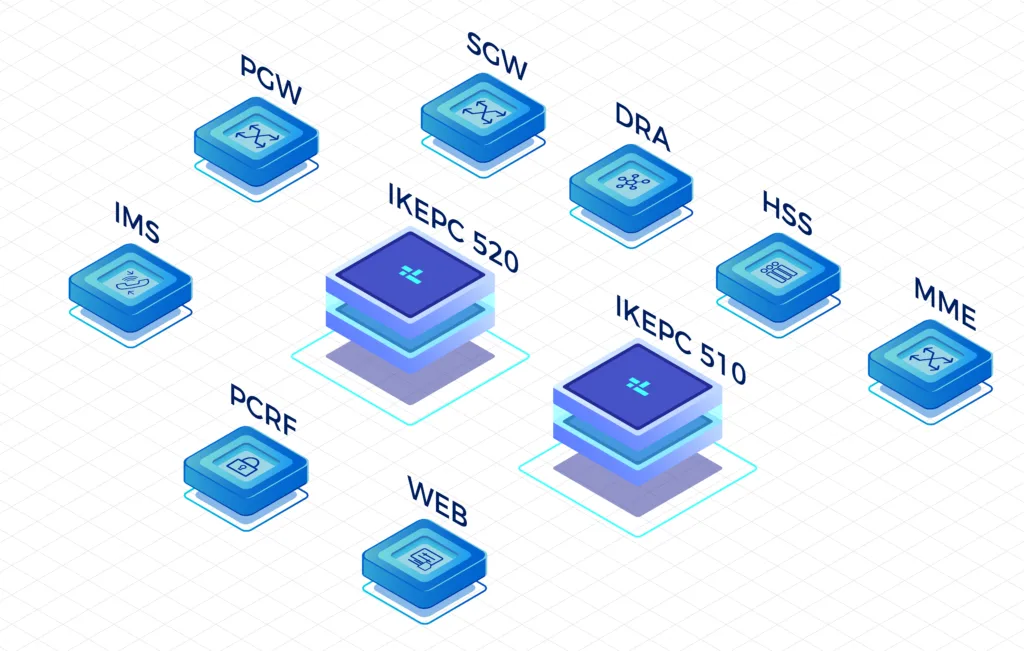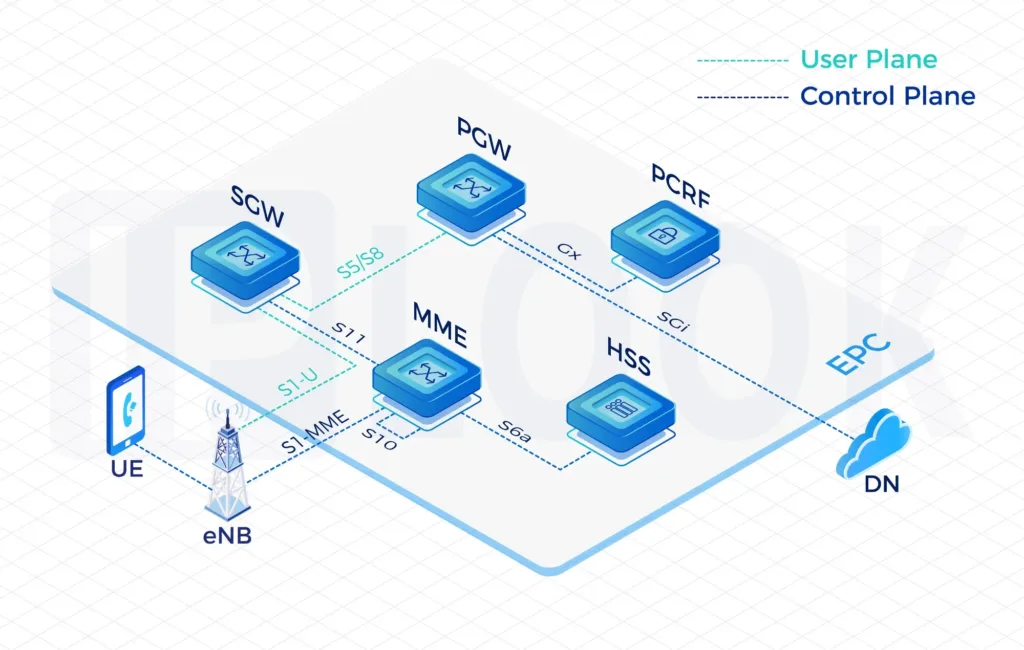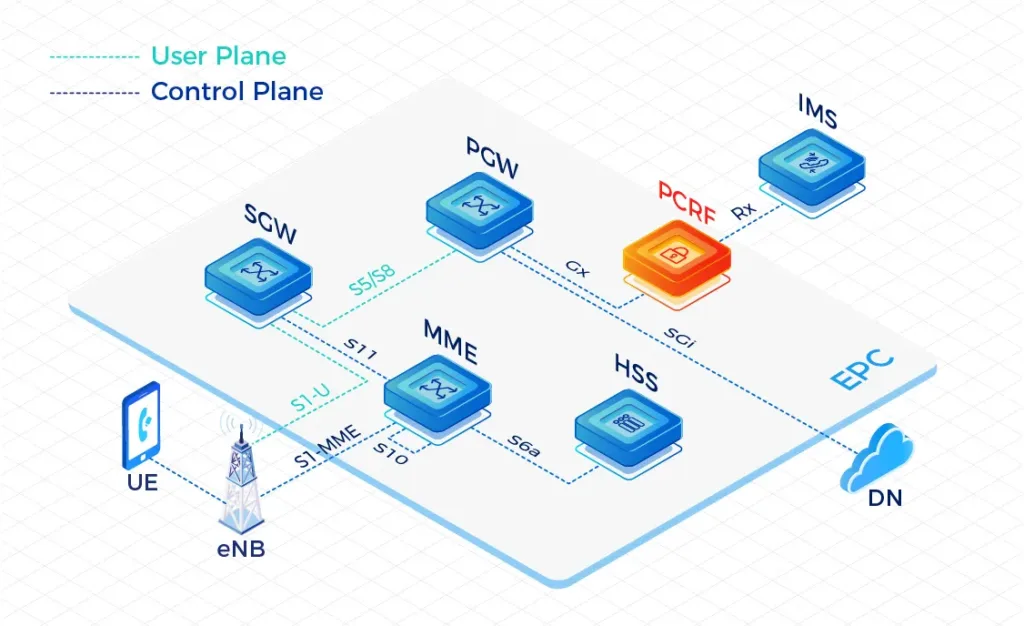Our High-Performing Core Network
Fully virtualizable on VMware, K8S, Docker and OpenStack containers
xGW(SGW/PGW)
SGW(Serving Gateway)
The SGW node handles the user data traffic, but isn’ t responsible for the signaling data used. It transports IP data from UE’s to the LTE Core Network. The SGW also routes incoming and outgoing IP packets for better system collaboration and serves as an anchor for the UE when it moves from one eNodeB to another.
PGW (PDN Gateway)
PGW is the network node that connects the EPC to external IP networks. What the PGW does is that it routes packets to and from external IP networks. Beyond that, it also allocates an IP address to all UEs and enforces different policies regarding IP user traffic such as packet filtering.
Key Benefits

Users: From 500 subs to 10 million subs

Throughput: Support 30 Gbps per instance

Support redundancy deployment

NFV Deployment on COTS and Cloud
IPLOOK's Virtualized SGW/PGW The integrated xGW(SGW and PGW) enables virtualized network functions
- IPLOOK has combined SGW and PGW in LTE into one component xGW. Both of these two elements can be deployed as virtualized element. The SGW and PGW functions could be realized as a single network element.
- The SGW and PGW software processes support standard 3GPP interfaces and are interoperable with the products of other vendors.
- IPLOOK xGW processes can also be distributed in a number of different ways:
▫ A single instantiation, centrally located in a data center
▫ Separate instantiations, distributed remotely
▫ An integrated model, in which some processes are located centrally and others are distributed remotely
Features
Session Management
- Multi-PDN Connection management
- EPC bearer establishment, modification, and release
Mobility Management
- TAU
- Purge
- Handover
- Attach/Detach
- Mobility timer management
- Service Request and Paging
Overload control
Charging function
IP address allocation
Data forward and route path selection
Interfaces comply to 3GPP R14
- Rx: between the PCRF and AF
- S5/8: between SGW and PGW
- S11: Between SGW and MME
- Gx: between the PCRF and PGW
- Gy: between the OCS and PGW
- Gn: between the SGSN and PGW
- S1-U: Between eNodeB and SGW
- S4/Gn: connects SGSN and SGW
- SGi: between the PGW and extern Packet Data Networks
- S5/S8: S5 connects the visited SGW and home PGW when the users are roaming; S8 connects the local SGW and local PGW




